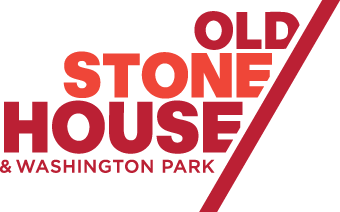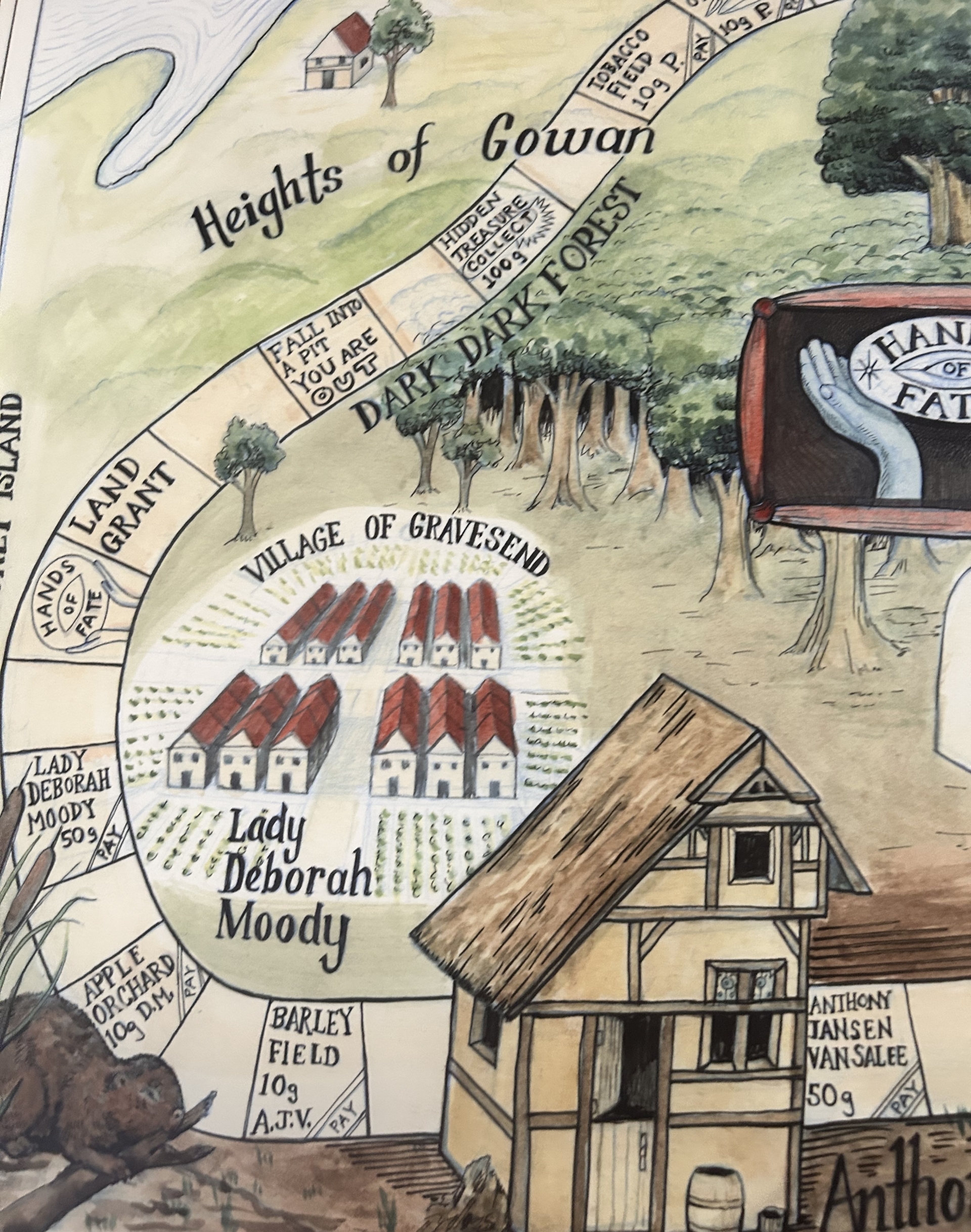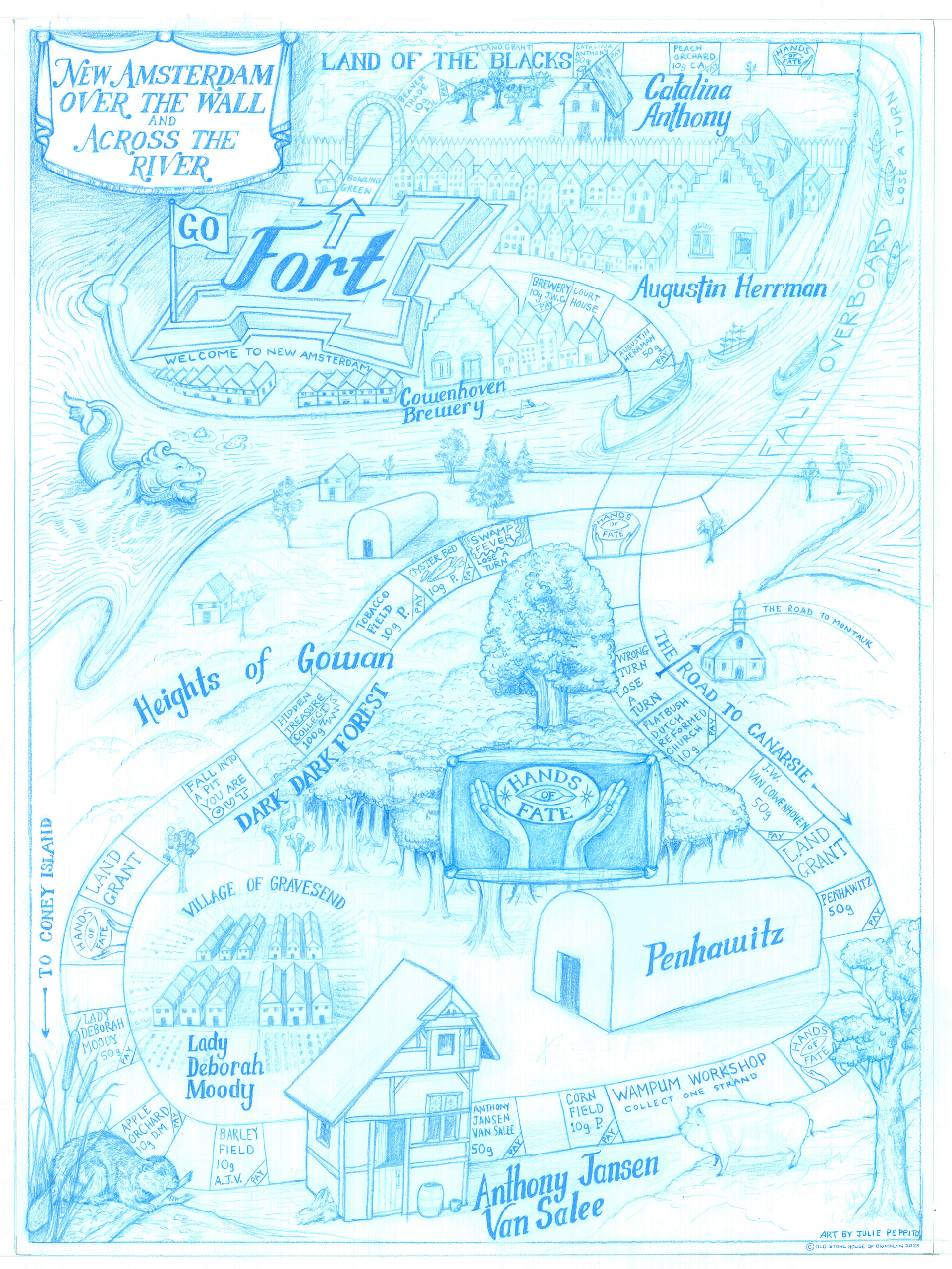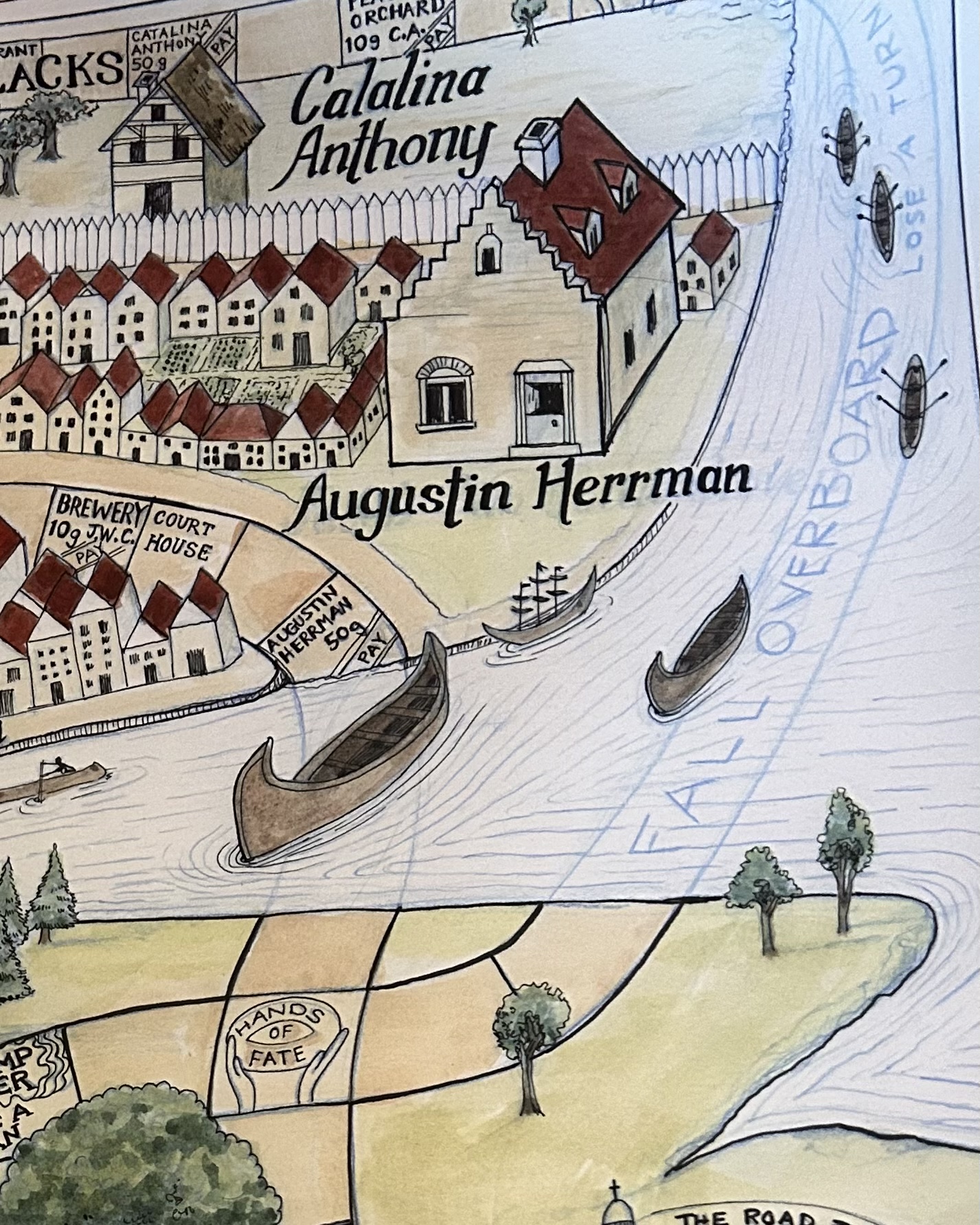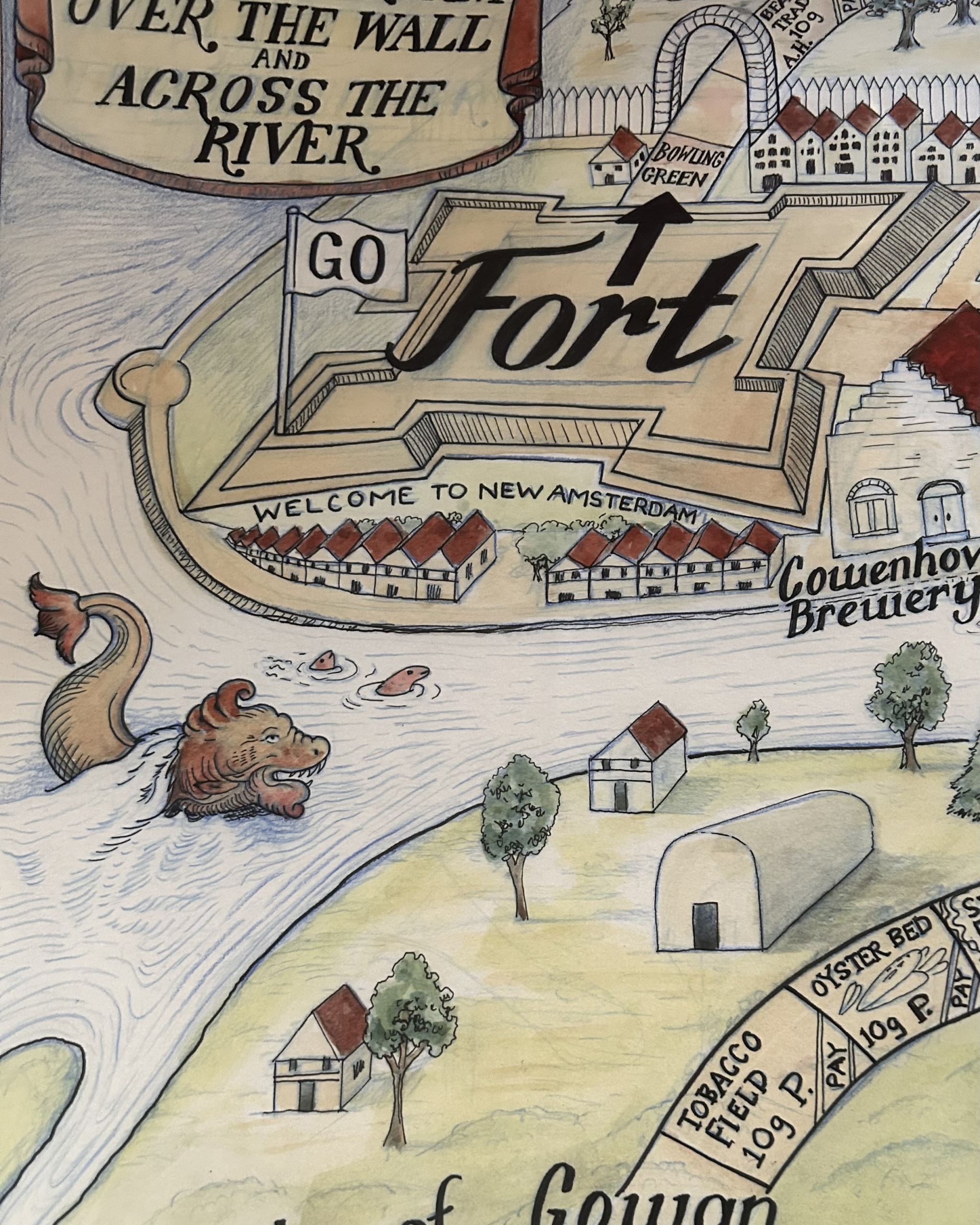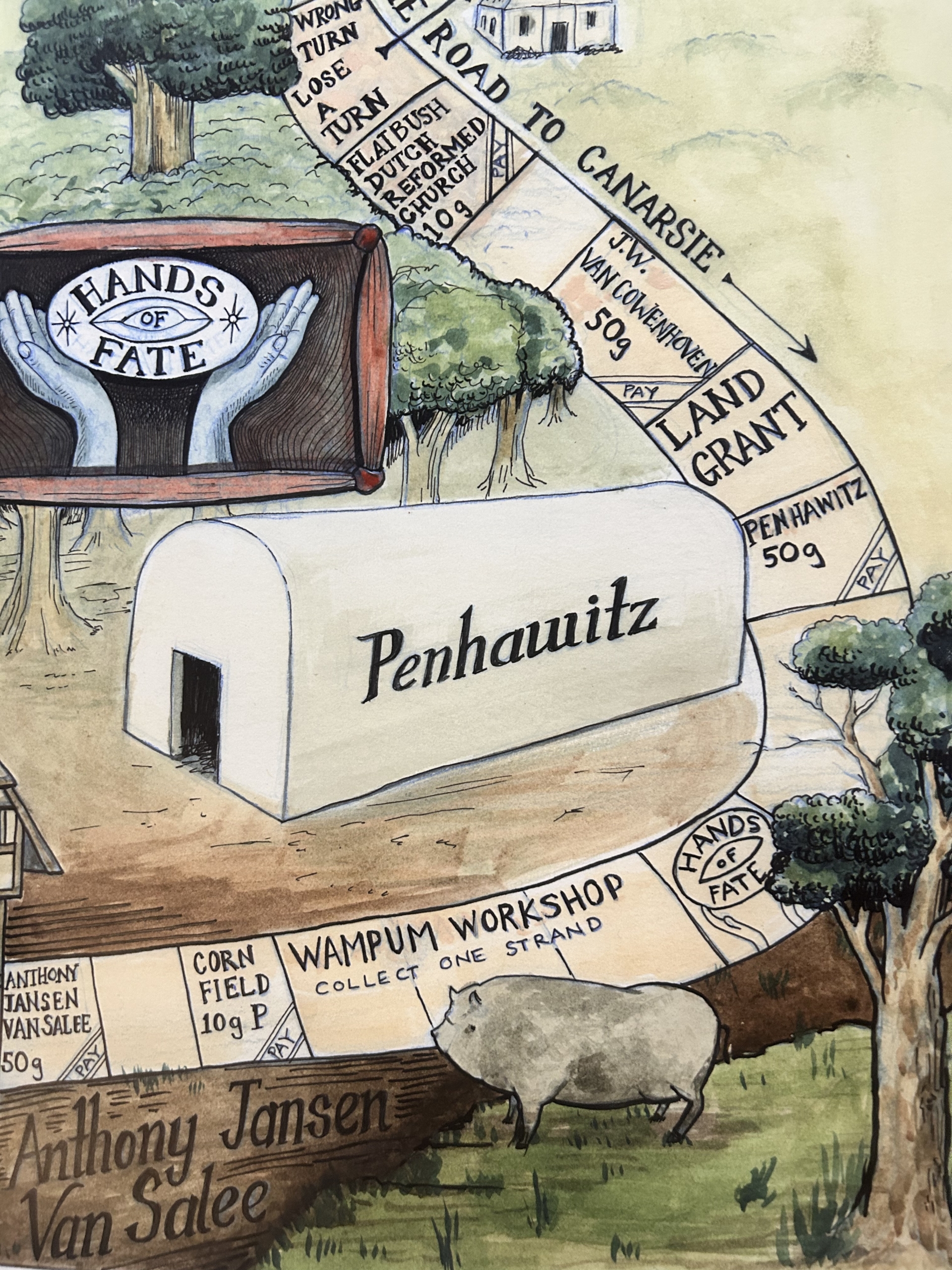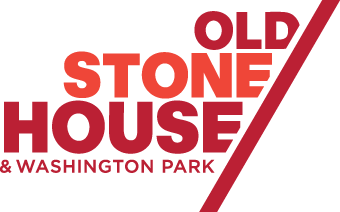New Amsterdam: Over the Wall and Across the River
A Dutch West India Trading Game
Trade currency and resources to move through the settlement. Experience events that shaped success or failure in the 17th century.
FOR TEACHERS
Play this game with your class!
BACKGROUND
In 1625, the Dutch West India Company established a settlement in the Lenape homeland, which the Dutch called New Amsterdam. Trade was the catalyst for contact, expansion and change in the 1640’s to 1660’s. In the late 1630’s, the Dutch West India Company (DWIC) encouraged expanded settlement beyond New Amsterdam to the surrounding areas. European traders came to New Amsterdam eager to make their fortunes by trading beaver pelts and tobacco. The company soon encouraged the immigration of more Europeans, including farmers, traders and craftspeople. Initially, the DWIC lived alongside the local Lenape settlements. As the colony expanded, the demand for farmland grew, causing the Europeans to seek land on Long Island that had long been cultivated by the Lenape.
Although New Amsterdam was a Dutch colony, the settlement was very diverse. For thousands of years, this area was the ancestral homeland of the Lenape. European settlers who sought material wealth left their homes and moved to New Amsterdam. Some came seeking refuge from discrimination. Others were brought to this area against their will and sold into bondage.
Each of the players begins with similar resources and has the same odds at succeeding and building wealth. This is not meant to imply that things were equal for all, which they were not, nor is it meant to minimize the challenges faced by all those living at the time.
GOAL OF THE GAME
Students will learn about the challenges faced by settlers and indigenous communities from 1640-1660 by:
- Traveling around the Game Board, a condensed historical map of the colony and its environs, beginning at the Fort at the Battery and moving North to the Land of the Blacks across the East River to Canarsie, which later became known as Brooklyn.
- Encountering different details of daily life in the colony and surrounding area.
- Practicing trade as they move through the landscape in and around the Dutch West India Company settlement of New Amsterdam and the indigenous town of Canarsie.
- Taking on the persona of one of six historical land owners outlined below.
GAME COMPONENTS
BOARD GAME
CHARACTER CARDS
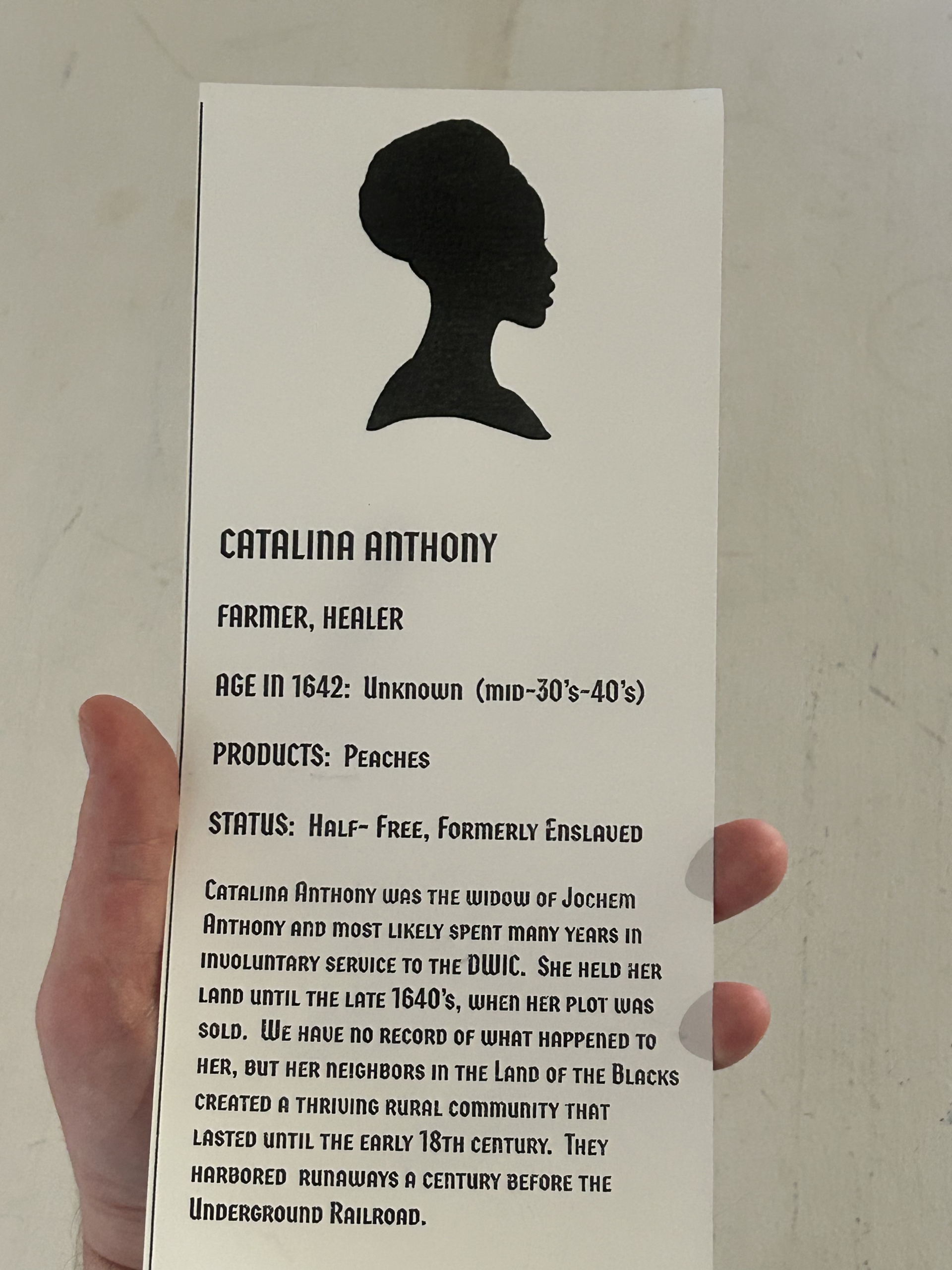
Print and cut out the six character cards. You’ll need three pieces of 8.5 by 11” paper.
Download the Cowenhoven & Anthony Character Card
GAME MARKERS
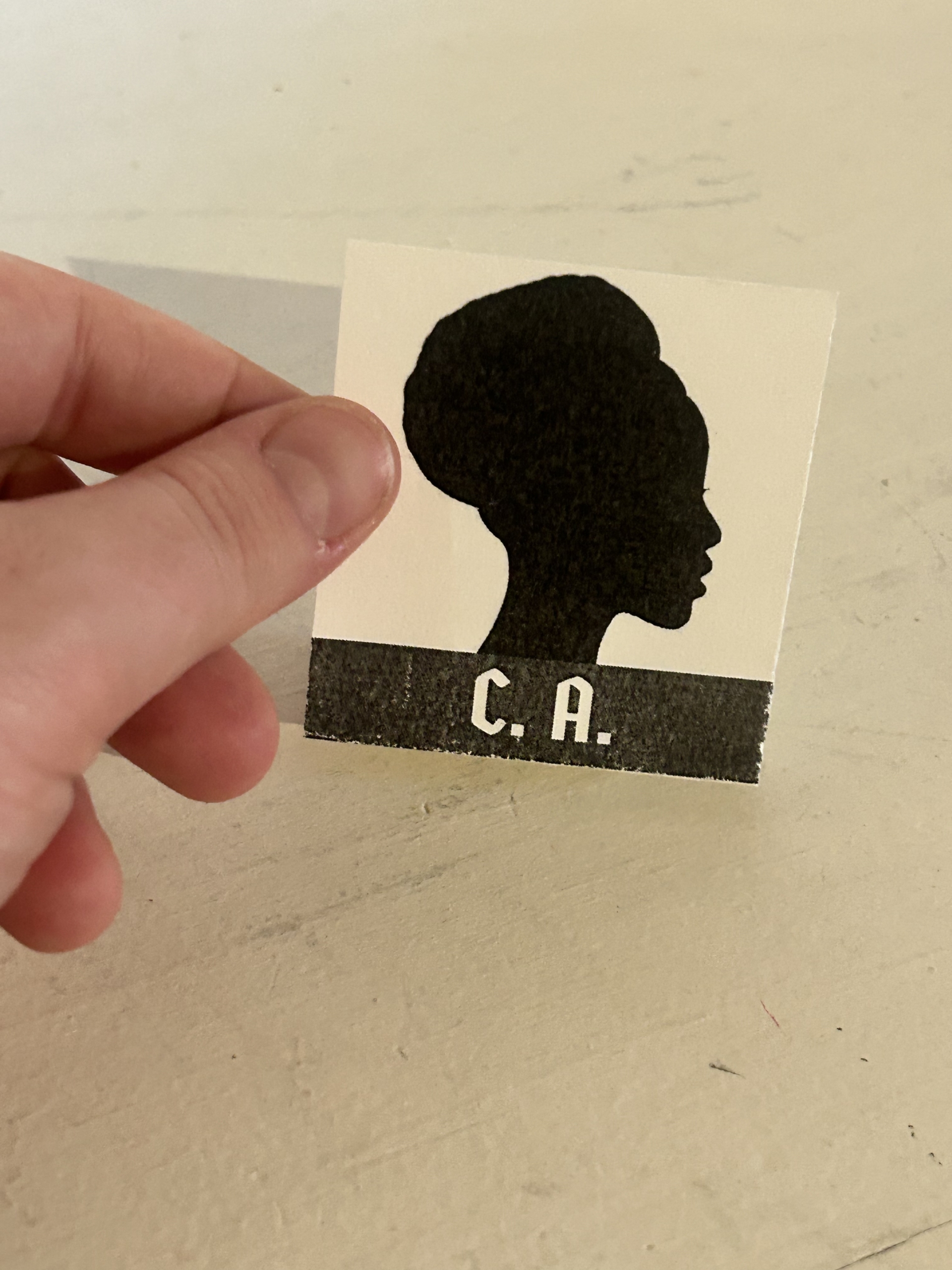
Print and cut out the 6 game pieces. You’ll need one sheet of 8.5 by 11” paper.
HANDS OF FATE CARDS
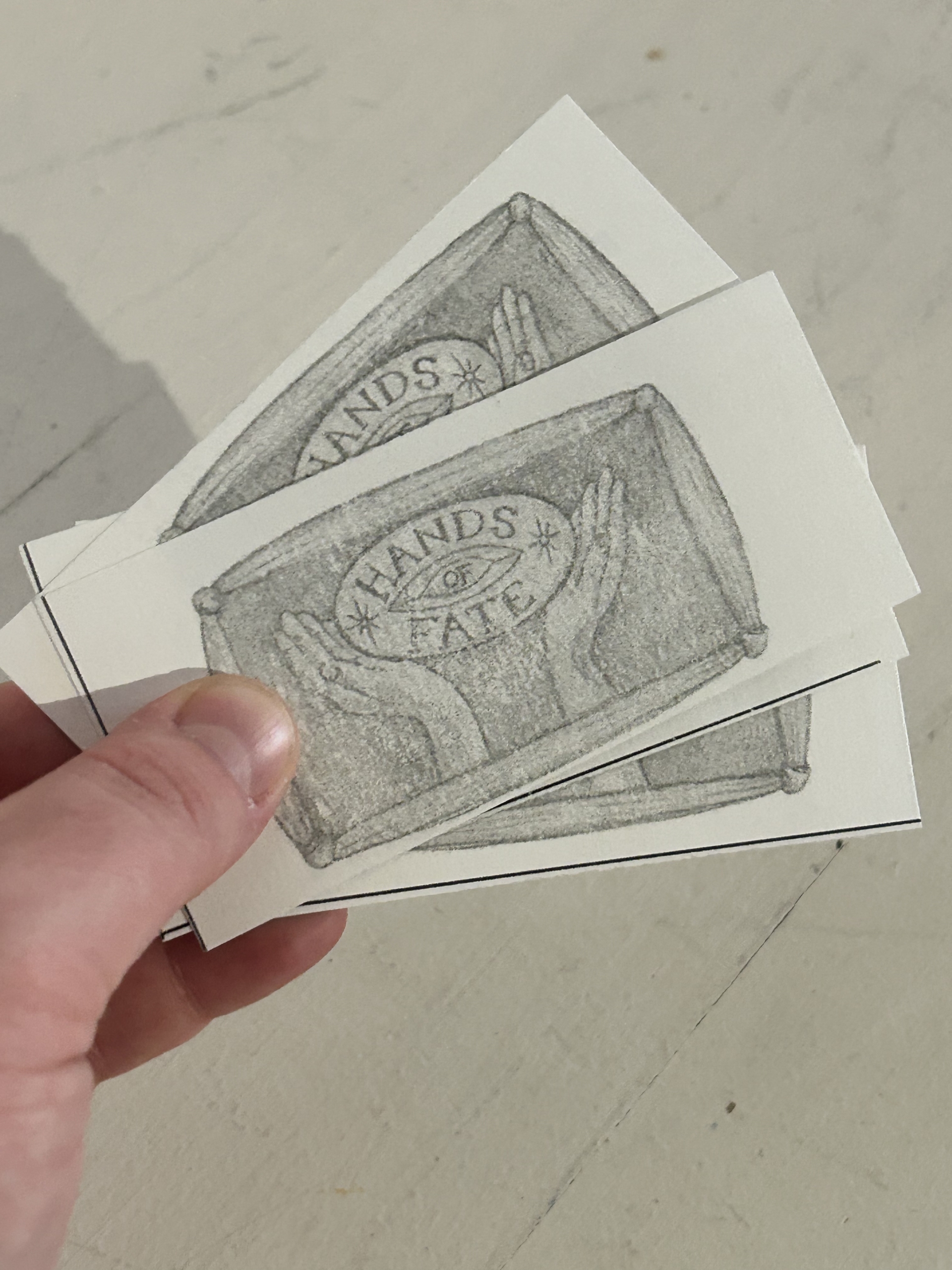
Print and cut out the ten hands of fate cards. You’ll need one piece of 8.5 by 11” paper, printed double sided.
WAMPUM CARDS
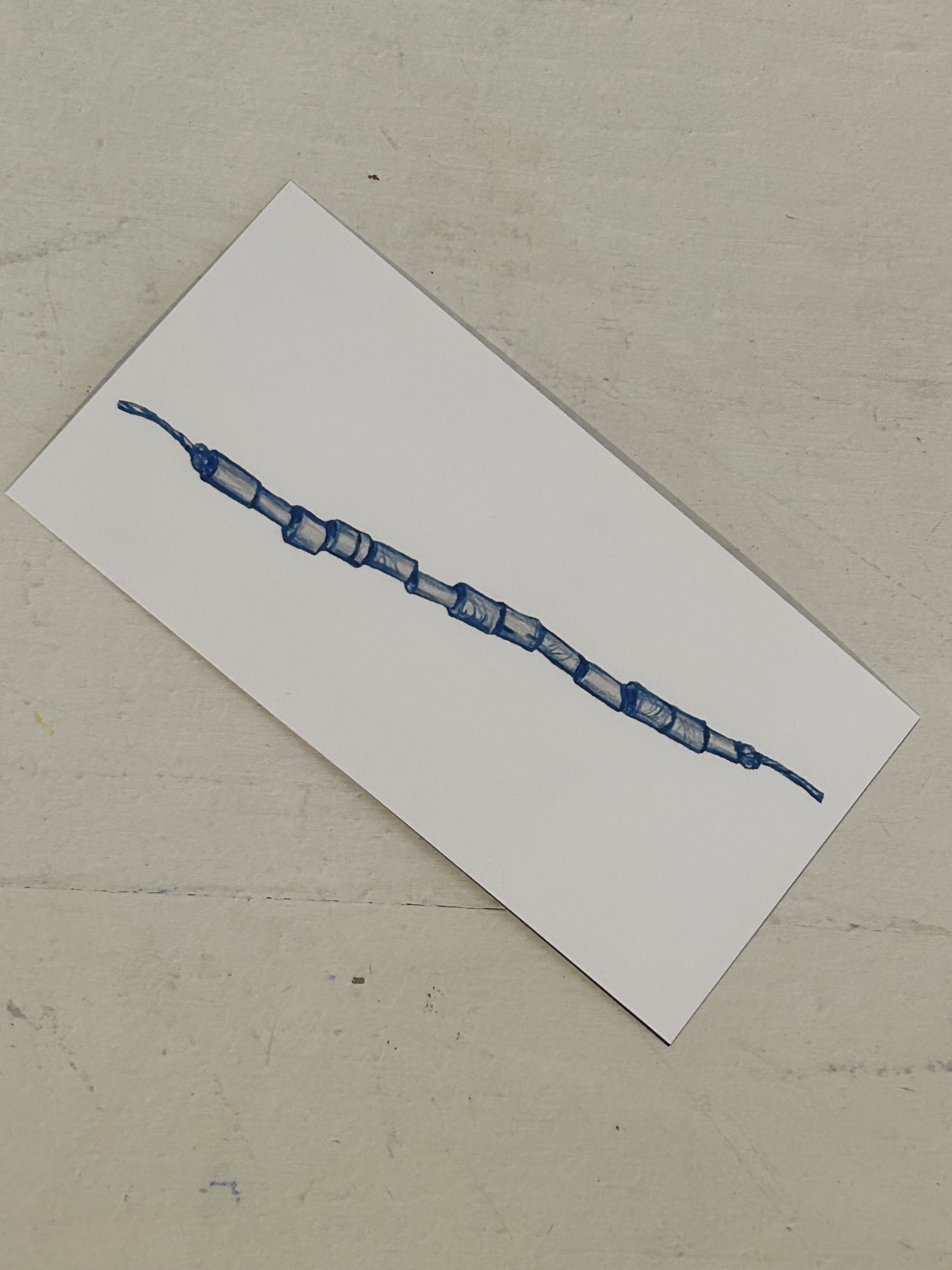
Print and cut out wampum cards. Alternatively, have students make wampum from paper beads or use pony beads as seen below.
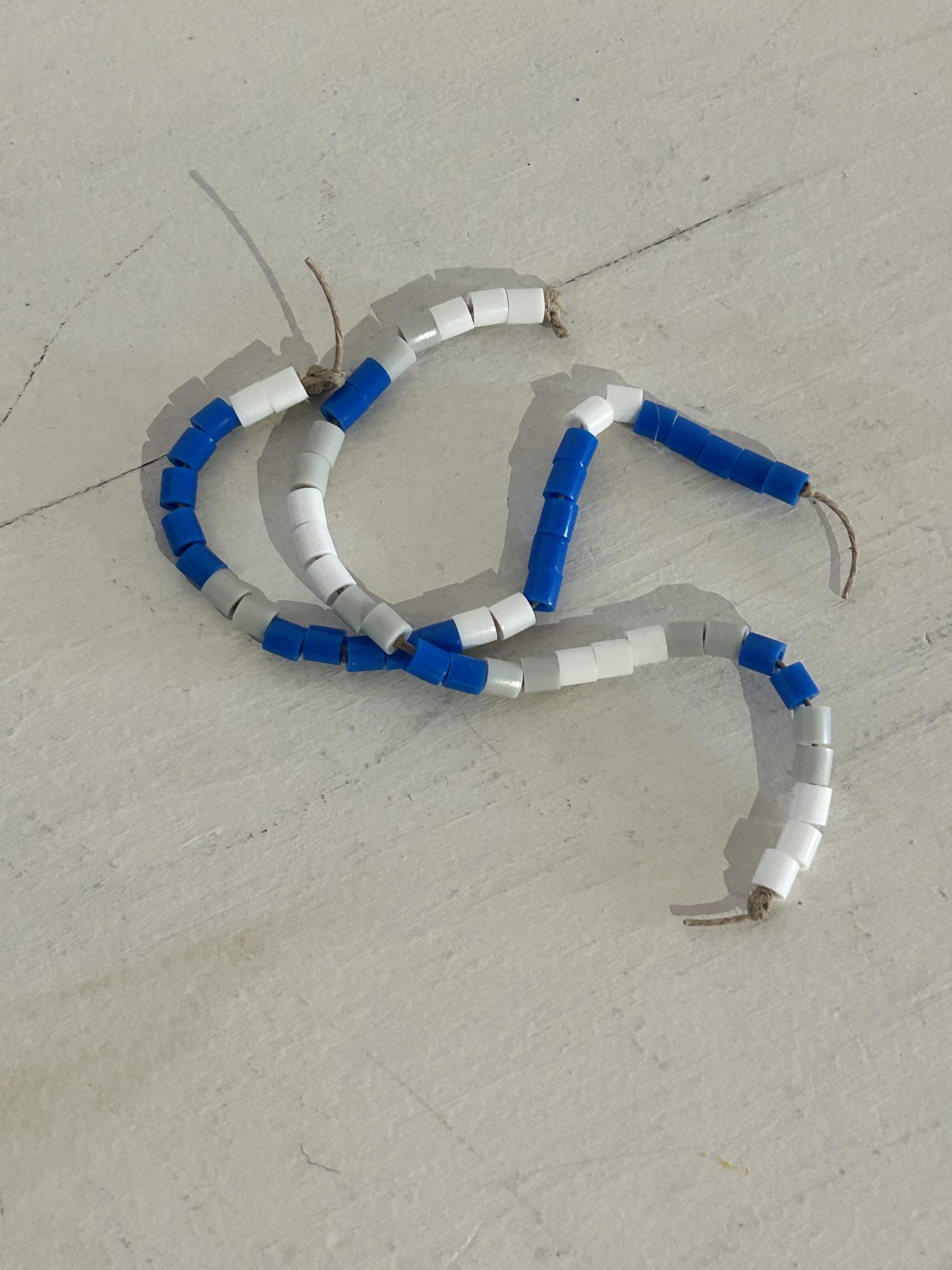
COIN CARDS
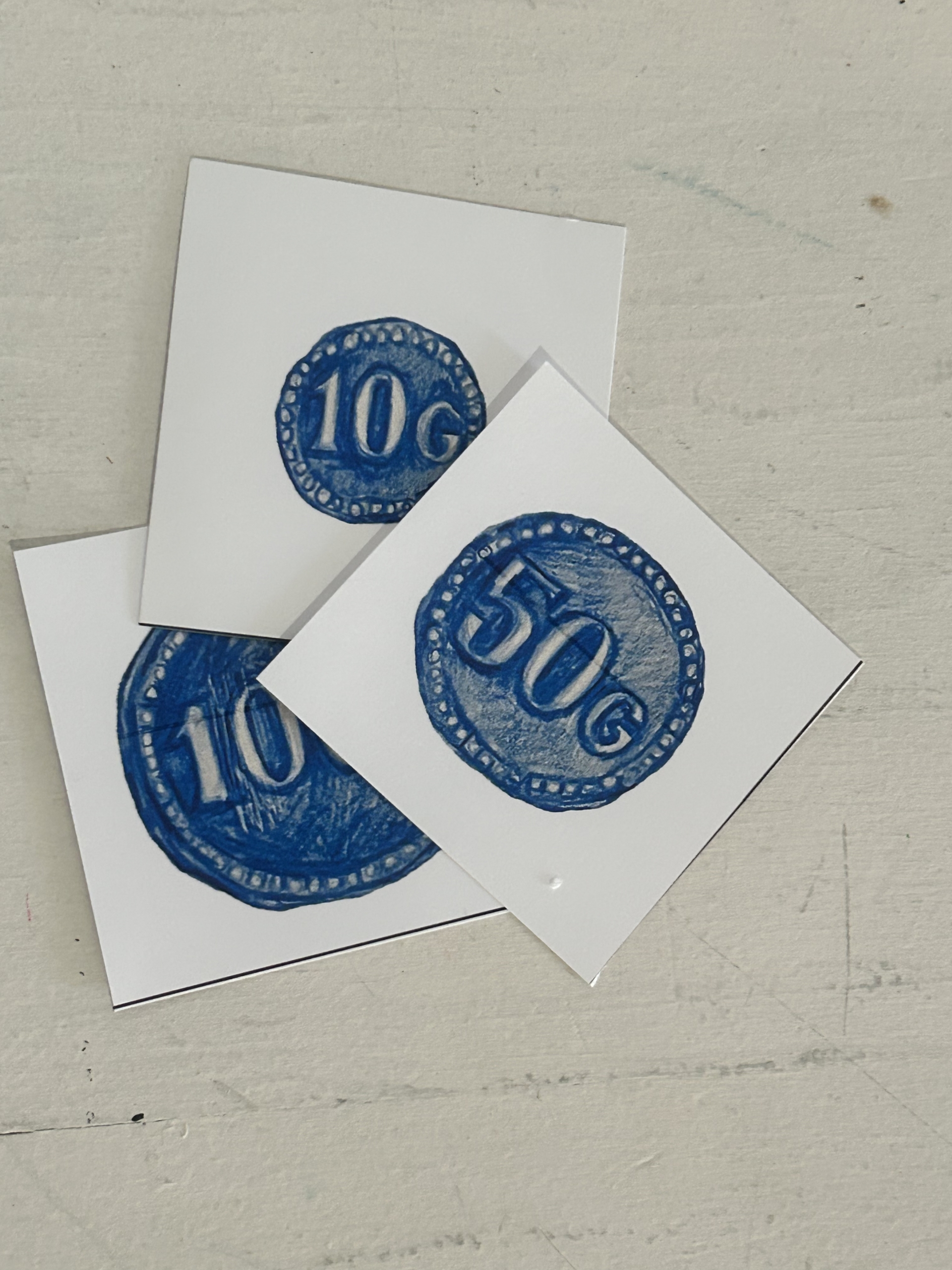
Download and cut out COIN CARDS, alternatively use TOY COINS (You’ll need three different denominations; e.g.: gold, silver and bronze) as seen below.
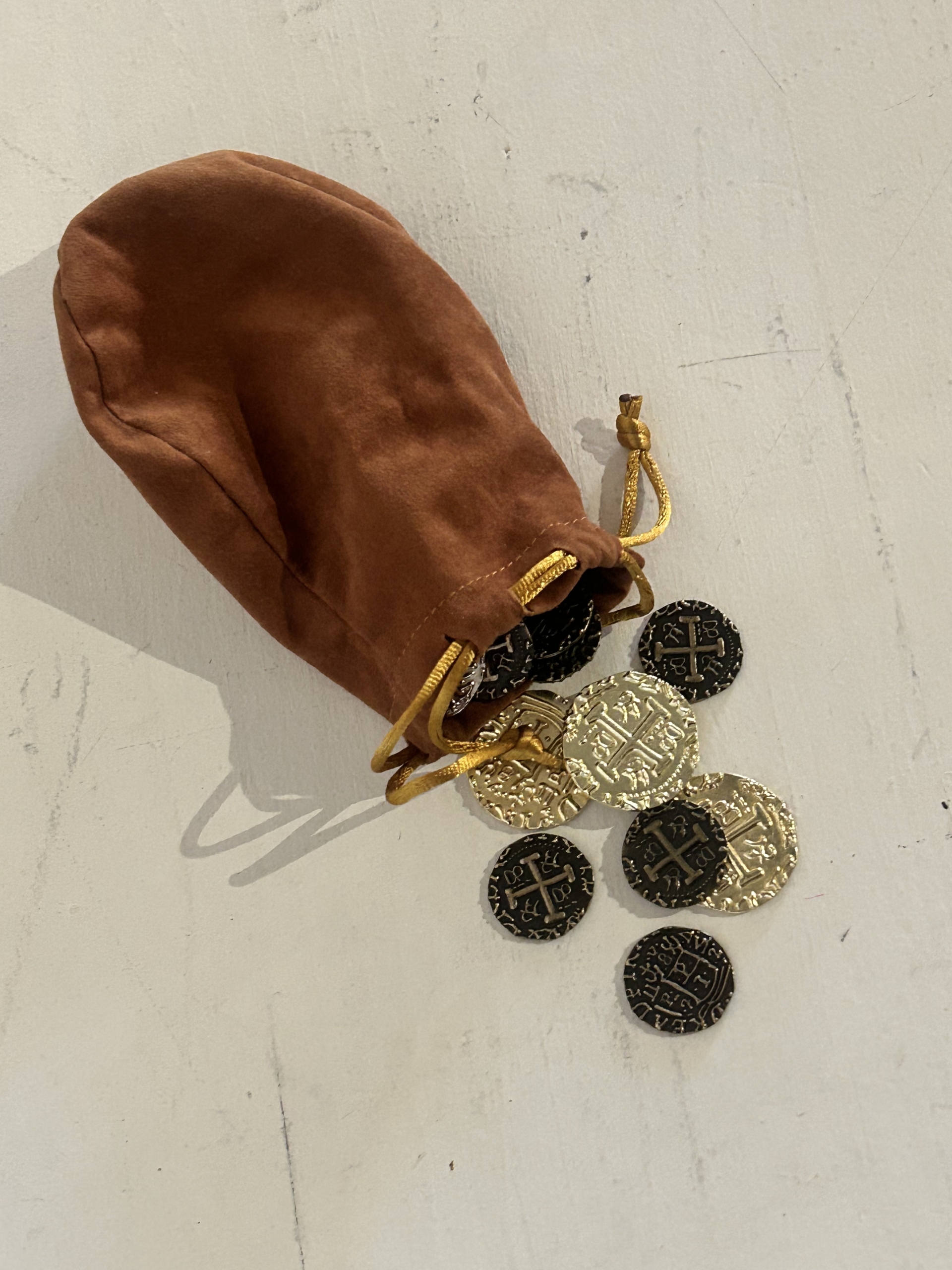
LAND GRANT CARDS
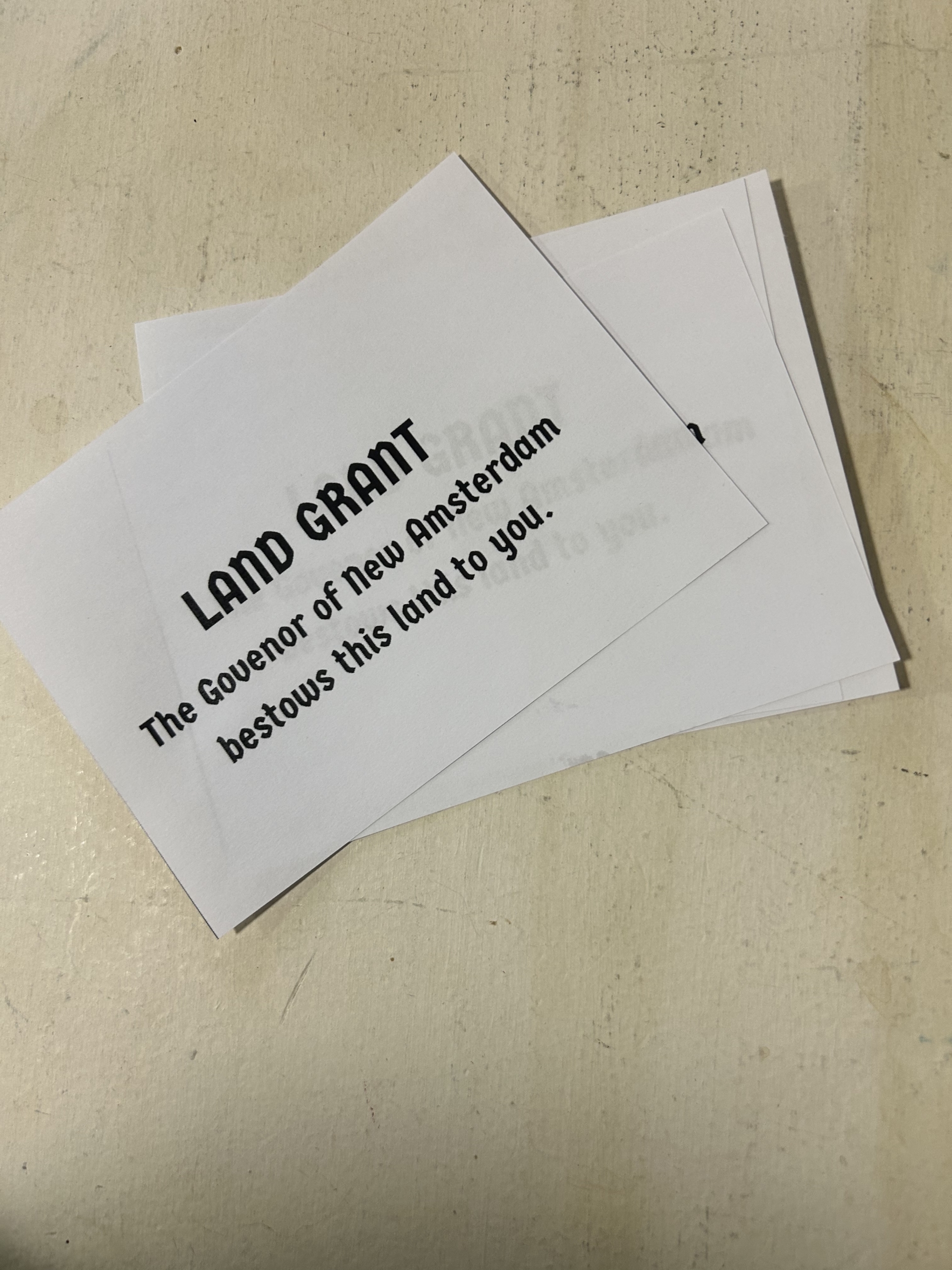
Print and cut out four land grant cards. You’ll need one sheet of 8.5 by 11” paper.
DICE
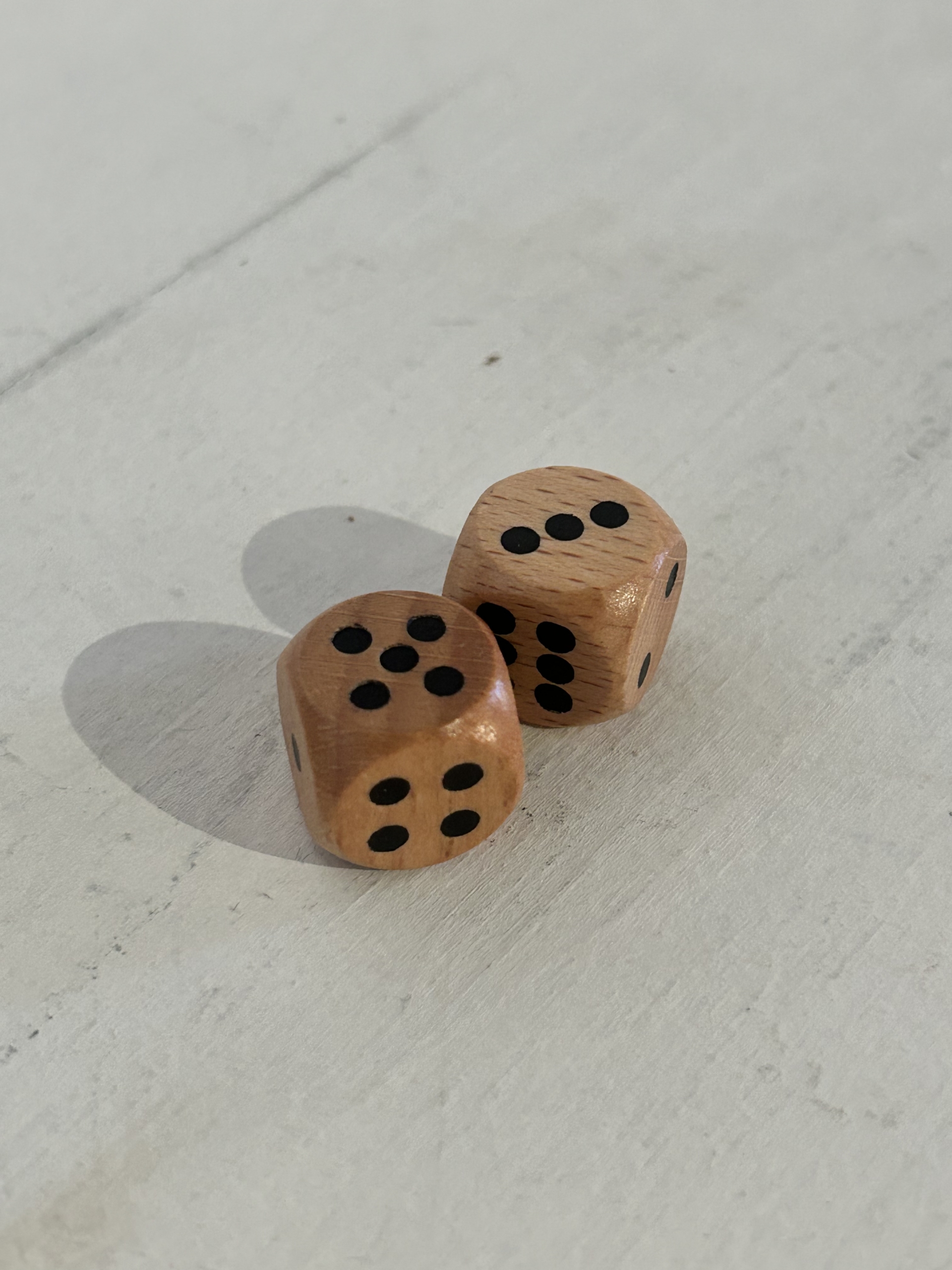
You’ll need one pair of dice.
GAME INSTRUCTIONS
OVERVIEW
2 to 6 players
Ages 7+
- Start at the Fort called the Battery!
- Roll the dice to move your character forward through the Village of New Amsterdam and beyond.
- Cross over the Wall to the North and enter the Land of the Blacks.
- Canoe across the East River to the fields and forests of Long Island, where adventures await!
- Trade goods, Apply for a land grant, Pay tithes to the Dutch Reformed Church and Build your fortune through trading tobacco, beaver pelts and wampum.
THE OBJECT OF THE GAME: Collect the most guilders and wampum to “win.”
PREPARATION
Choose a character from the six Character cards (see below).
Place your marker on the Fort in New Amsterdam.
Each player receives a pouch containing guilders (G):
Two 100 G pieces (gold)
Two 50 G pieces (silver)
Two 10 G pieces (bronze)
PLAYING THE GAME
- Roll the dice to see who goes first.
- Highest roller moves their marker forward on the board game.
- Follow the instructions on the game board as you land on each space.
- HANDS OF FATE: Pick a card from the stack and follow the instructions.
- HOME SPACE: Each character has a home space and at least one product space.
Products include:
- Peaches: Catalina Anthony
- Beer: Jacob Wolferts Van Cowenhoven
- Beaver Pelts: Augustin Herrman
- Apples: Lady Deborah Moody
- Corn, Oysters and Tobacco: Penhawitz
- Barley: Anthony Jansen Van Salee
- If you land on another character’s HOME SPACE, pay 50 G to that player.
- If you land on their PRODUCT, pay them 10 G.
- If that character is not in the game, place the money on their HOME.
- WAMPUM can be collected at certain sites. Each strand is worth 50 G.
- LAND GRANT if you land on a LAND GRANT space and there’s a LAND GRAND card available, you can collect a LAND GRANT card, worth 100 G. Players may use LAND GRANTS to trade or pay debts as needed. Once all the LAND GRANTS are taken, players get
- If you land on the FORT, collect all funds paid to the FORT, the COURTS, (the Flatbush Dutch Reformed Church), or any money paid to unused player HOME SPACES.
- If you land on HIDDEN TREASURE, collect 100 G.
- If you land on FALL INTO THE PIT, you are out of the game.
Play for an allotted time or until all but one player loses their assets. The player with the most assets at the end “wins”.
DOWNLOAD THESE INSTRUCTIONS
CHARACTERS
These characters are based on six individuals who lived and worked in New Amsterdam and the area that later became known as Brooklyn between 1642 and 1664. Five of the six characters were settlers in the New Amsterdam/Western Long Island vicinity. The sixth, Penhawitz, was an esteemed sachem of the Lenape people who negotiated land settlements on behalf of his community.
Use the links below to learn more about the lives of the individuals featured in this game.
Catalina Anthony
Catalina Anthony: Born in West Africa. Formerly an enslaved landholder in the Land of the Blacks.
Catalina Anthony was the widow of Jochem Anthony and most likely spent many years in involuntary service to the DWIC. She held her land until the late 1640’s, when her plot was sold. We have no record of what happened to her, but her neighbors in the Land of the Blacks created a thriving rural community that lasted until the early 18th century. They harbored runaways a century before the Underground Railroad.
In 1639, several enslaved people from West Africa petitioned the DWIC for their freedom. These men and women were most likely among the first enslaved persons to arrive in New Amsterdam in 1626. They had served the company faithfully for many years. The DWIC agreed to their request and gave land grants to these men and their wives. Under the direction of DWIC Governor Willem Kieft, these grants stipulated that each was required to pay a sum to the company each year to maintain their independence, but that in return they were given their freedom and a plot of land to the North of the dividing Wall (today’s Wall Street). Their children remained in bondage.
Governor Willem Kieft had another motive for giving these land grants North of the barrier wall. This Black settlement created a barrier between the city of New Amsterdam and the Lenape people to the North in what is now Soho and Greenwich Village.
Link for further research:
Jacob Wolferts Van Cowenhoven
Jacob Wolferts Van Cowenhoven: Born in the Netherlands. Landowner and brewery owner.
Jacob Wolferts Van Cowenhoven immigrated to New Netherlands as a child in 1625. HIs father, Wolferts Gerrit Van Cowenhoven, purchased the settlement that became known as Brooklyn’s Gerritsen Beach from Penhawitz. As an adult,Jacob advocated attacking the Lenape and the DWIC rewarded him with more land after Kieft’s War. Jacob was unlucky in business, but eventually became a prominent citizen of New Amsterdam. He opened his large brewery at the corner of Stone and Broad Streets in 1657.
Links for further research:
Augustine Herrman
Augustine Herrman: From Bohemia. Tobacco trader and landholder.
Augustine Herrman, from Prague, Bohemia, was still in his teens when he came to New Amsterdam as an agent of the DWIC in 1640. He became a very successful trader of furs and tobacco. Herrman later moved to Maryland and, in exchange for creating a detailed map of the colony, was granted a large plot of land which became known as Bohemia Manor.
Links for further research:
https://encyclopedia.nahc-mapping.org/ancestor/augustine-herrman-id-1660078
Lady Deborah Moody
Deborah Moody: English. Founder of the Gravesend settlement on Long Island.
Lady Deborah Moody was born in England. She was the wealthy widow of Sir Henry Moody. After her husband’s death, Deborah joined the Anabaptists. The British treated Anabaptists harshly, which prompted Deborah and others to flee to Massachusetts in 1639, at the age of 54. The settlers of Massachusetts found her dangerously outspoken. She left Massachusetts for New Amsterdam in 1643.
Lady Deborah was the only woman known to start a village in colonial America. In 1643 the DWIC allowed Deborah and her followers to start the settlement of Gravesend. Governor Willem Kieft had another motive for giving this land grant to them: the village of Gravesend helped the DWIC outnumber the Lenape on western Long Island.
Deborah became an influential community leader in New Amsterdam, a role which was unusual for a woman.
During Kieft’s War, Lenape warriors repeatedly attacked Gravesend because they considered the settlement illegal. Moody and the Anabaptist community were noted for their bravery during these attacks.
Links for further research:
https://encyclopedia.nahc-mapping.org/document/letter-director-stuyvesant-lady-debora-moody
Penhawitz
Penhawitz: Sachem of the Lenape people on Long Island, Penhawitz negotiated several treaties and land grants in Long Island with European settlers in the 1630’s.
Penhawitz was the sachem, or leader of a group of (Munsee) Lenape people. Their home was located near Canarsie. Penhawitz was involved in several land treaties in 1630’s.
In 1642, New Amsterdam’s governor, Willem Kieft, began a more aggressive assault on the neighboring Lenape. Under Kieft’s command, the DWIC violated treaties and began a series of violent attacks on the Lenape in areas such as Pavonia (today’s Jersey City, NJ), Corlears Hook (today’s Lower East Side) and Marechkawick (today’s Boerum Hill, Brooklyn) in 1643. These attacks provoked what came to be known as Kieft’s War. By the end of Kieft’s War in 1645, Penahawitz’s signature is not regularly found in documents. His relative Takapousha emerged as a prominent Sachem through the next two decades.
Links for further research:
https://encyclopedia.nahc-mapping.org/ancestor/chief-penawitz-id-1609000053
https://encyclopedia.nahc-mapping.org/document/dutch-colonial-council-minutes-13-may-1640
https://encyclopedia.nahc-mapping.org/document/proposition-indians-long-island-part-tackpaasa
Anthony Jansen Van Salee
Anthony Jansen Van Salee: aka Anthony the Turk. Born in Morocco. Landholder and trader.
Anthony Jansen Van Salee, born in Cartagena, Spain, was also known as Anthony the Turk. Van Salee is believed to be the son of Jan Janszoon (Jan Jansen), a Dutch pirate who after 1619 served a Moorish state on the Barbary Coast. Some believe he was the first Muslim in New Amsterdam. Anthony and his wife Grietje often quarreled with their neighbors and were involved in many court actions in the 1630’s. They challenged rules requiring all residents to contribute to the Dutch Reformed Church and openly criticized the colony’s leaders. After the DWIC banished Van Salee from Manhattan, he purchased land on Long Island in 1638 adjacent to the land the DWIC would give to Deborah Moody a few years later.
Links for further research:
https://encyclopedia.nahc-mapping.org/ancestor/anthony-jansen-van-salee-id-1660203
https://encyclopedia.nahc-mapping.org/document/order-petition-anthony-jansen-salee
SOURCE MATERIAL AND ACKNOWLEDGEMENTS
This project was created by Maggie Weber, Director of Education at Old Stone House & Washington Park.
This program is supported as part of the Dutch Culture USA program by the Consulate General of the Netherlands in New York.
Artwork by Julie Peppito
View and Download Peppito’s CV
Special Thanks to the following individuals for their contributions:
Toya Dubin, The New Amsterdam History Center
Maeve Montalvo, Museum of The City of New York
More information on the Dutch West India Company:
